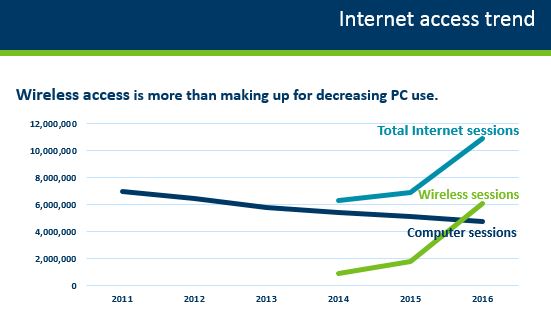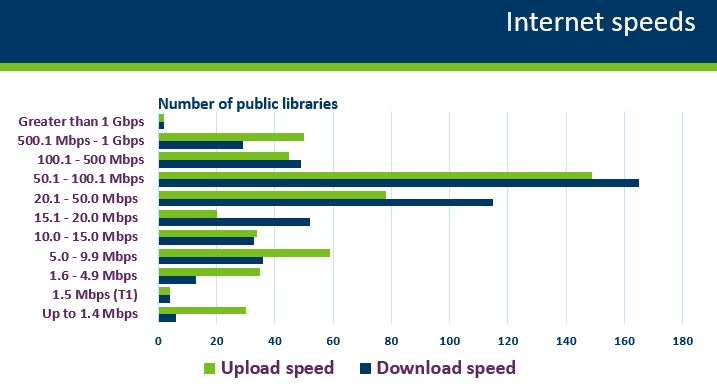All public libraries in Minnesota submit an annual report to the Minnesota Department of Education, which, in turn, shares part of the information with the Institute of Museum and Library Services for its Public Libraries in the United States Survey.
 The data reveal many interesting developments in library use, services, and infrastructure over the years – digital inclusion is one such area. Public libraries just submitted their reports on 2016, and they show Minnesota mirrors trends nationwide. For example, in 2016, Minnesota libraries hosted 4,764,414 computer sessions and 2,156,920 wireless sessions. Looking back over the past few years, hardwired computer use is declining, while wireless use is increasing.
The data reveal many interesting developments in library use, services, and infrastructure over the years – digital inclusion is one such area. Public libraries just submitted their reports on 2016, and they show Minnesota mirrors trends nationwide. For example, in 2016, Minnesota libraries hosted 4,764,414 computer sessions and 2,156,920 wireless sessions. Looking back over the past few years, hardwired computer use is declining, while wireless use is increasing.
Ninety-eight percent of public library outlets report offering free wi-fi, which reflects their patrons’ demand for this service.
Minnesota libraries’ investments in broadband also have increased over the years. Libraries leverage the federal e-rate program for discounts, and state funding covers many of the remaining costs of categories one and two e-rate eligible services. Libraries often collaborate with local school districts and other government entities for planning, enhanced services, and cost savings. Most libraries are able to offer robust Internet speeds for public use and for staff activities.

Image Credit: Minnesota Department of Education. (2016.) [Graphs from 2016 Minnesota Public Library Annual Report, June 2017.] Retrieved from https://mn.countingopinions.
